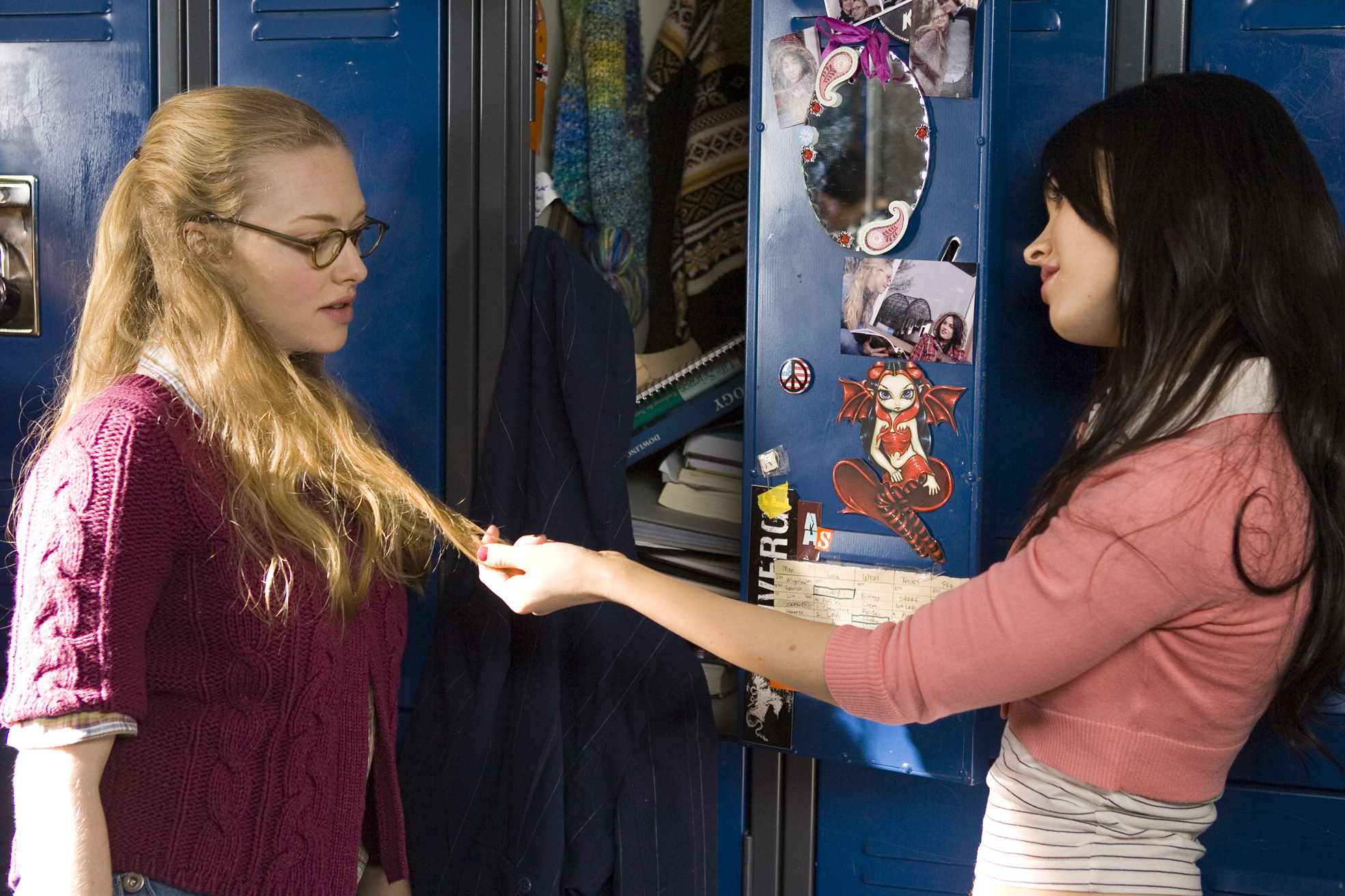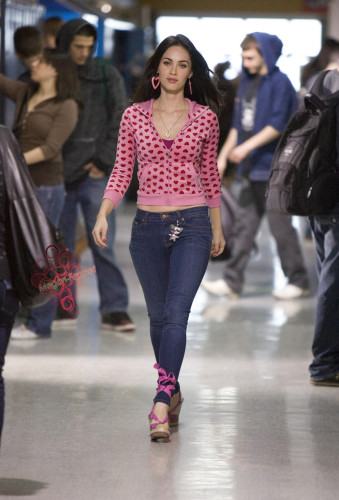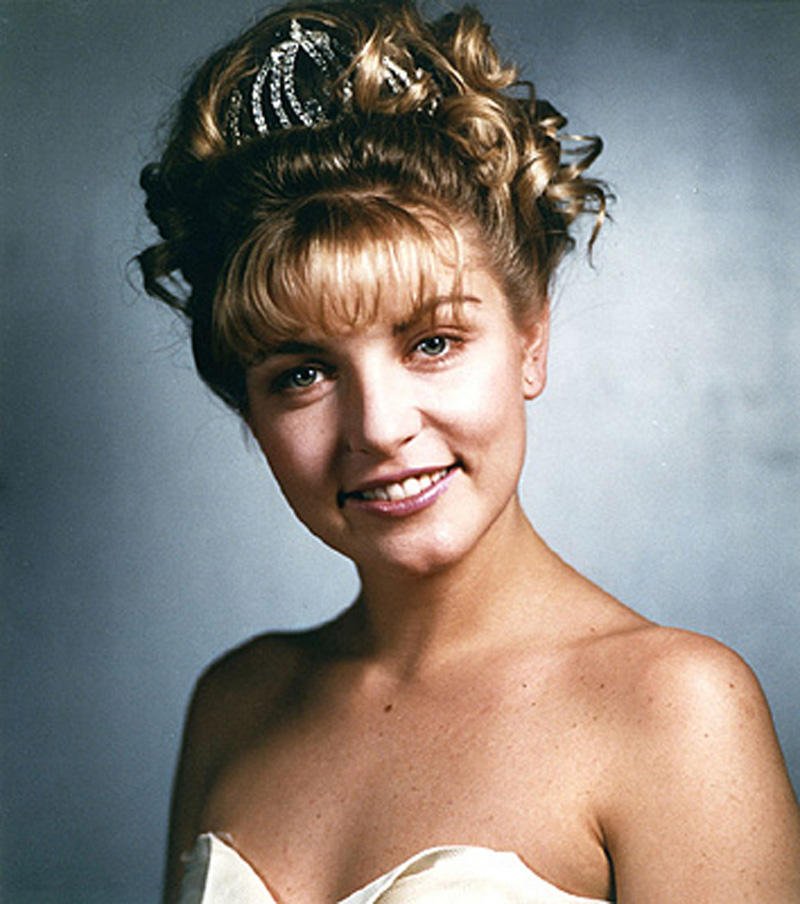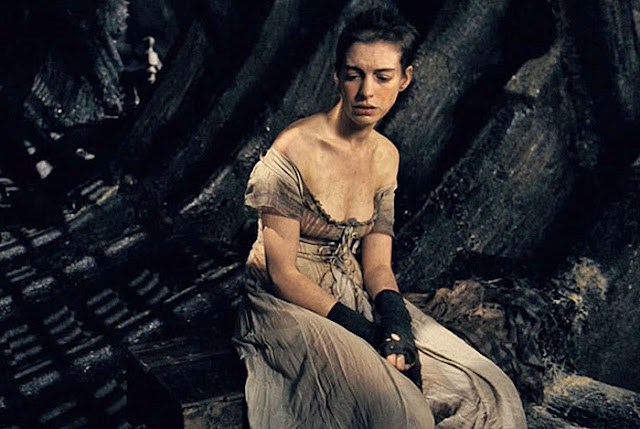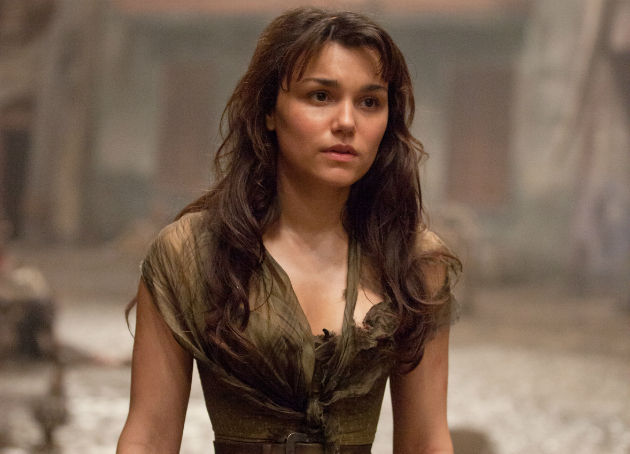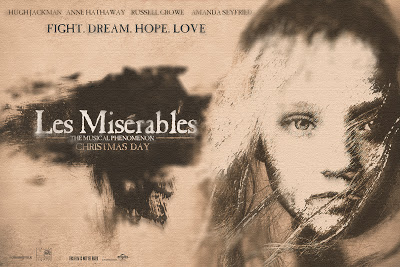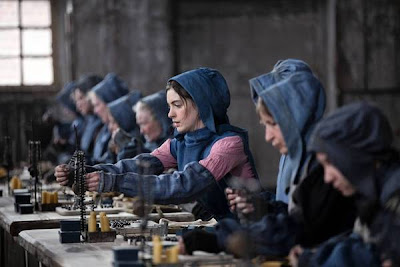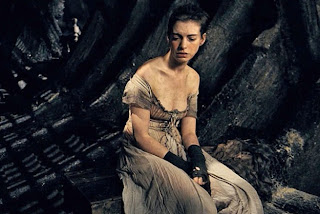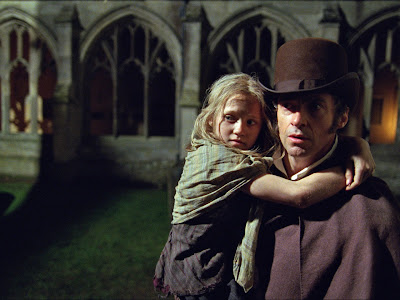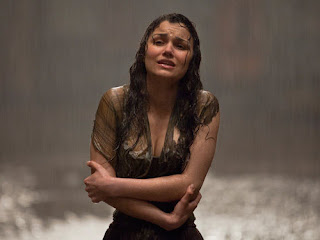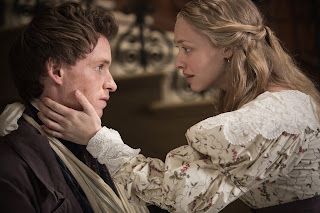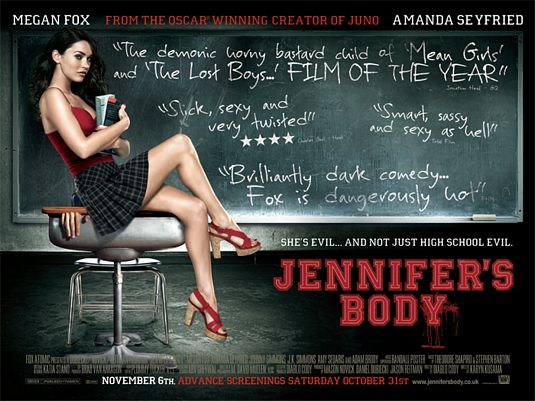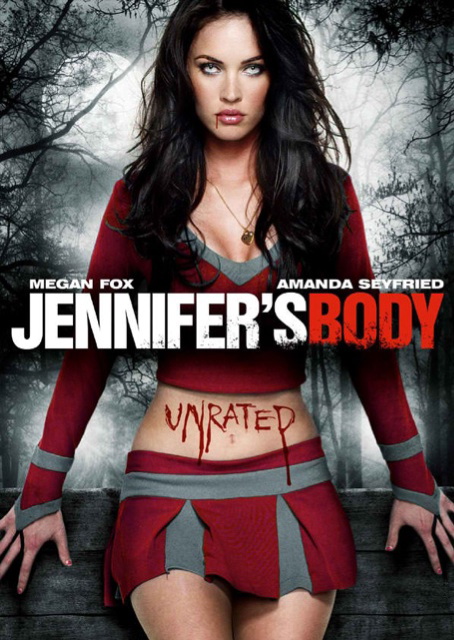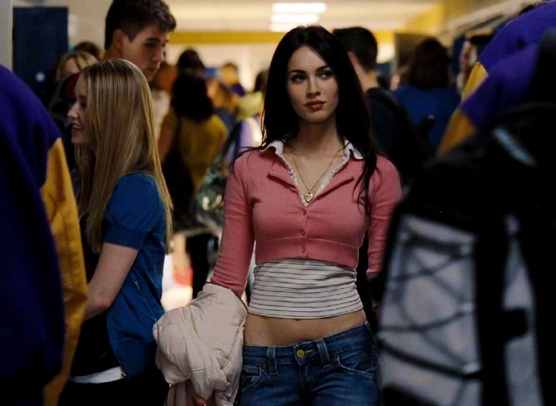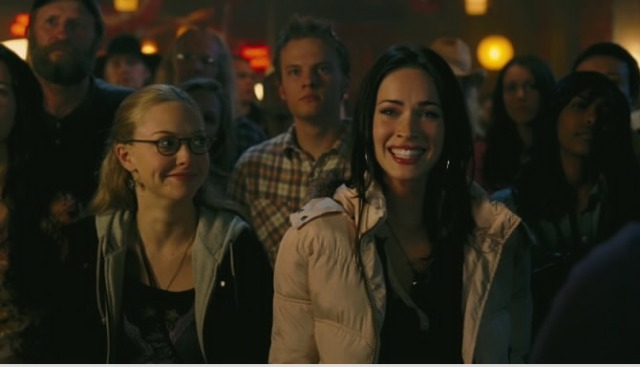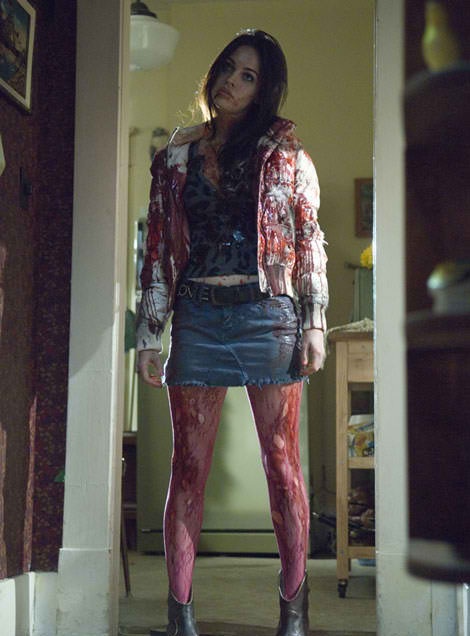This guest post written by Tessa Racked appears as part of our theme week on Bisexual Representation. | Spoilers ahead.
While the feminist merits of the 2009 horror film Jennifer’s Body remain up for debate, there is no denying that it is a standout in its genre for being female-centric. Directed by Karyn Kusama and written by Diablo Cody, Jennifer’s Body follows the story of Jennifer Check (Megan Fox) and Anita “Needy” Lesnicky (Amanda Seyfried), two teenage girls from a small town whose troubled friendship is shaken up when Jennifer is turned into a demon who must feed on human flesh. The film revels in Jennifer’s seduction and consumption of boys, but it simultaneously gives importance to the conflict between her and Needy. The film throws many heteronormative assumptions made by the audience into doubt. Jennifer isn’t afraid to talk about or act on her desire to have sex with men, but the most important relationship in her life is with Needy, and that relationship is eroticized at some key moments, including Jennifer referencing how they used to “play boyfriend-girlfriend.”
In a 2009 interview with The New York Times, Megan Fox describes Jennifer as a “cannibalistic lesbian cheerleader.” We don’t have direct evidence of how Jennifer or Needy would describe their sexual orientations, but Jennifer’s Body works as a depiction of the relationship between two young bisexual women.
If nothing else, Jennifer’s Body subverts expectations around gender and sexuality in horror films. Sexually active young women commonly meet their fates early on at the hands of the antagonist while their innocent/virginal counterparts survive. But as Gaayathri Nair observes in her article “Does Jennifer’s Body Turn the Possession Genre on Its Head?,” “Jennifer’s lack of purity saves her. The fact that she is not actually a virgin means that she gets a second shot at life.” Not only is she more than fodder for the sake of building tension, Jennifer becomes the most powerful character in the film, as Needy goes from her sidekick to her nemesis. Instead of being fueled by revenge or menace, Jennifer’s love/hate relationship with Needy is the driving force behind Jennifer’s Body. A competitive tension exists between their relationship and how they relate to the male characters that suggests an equal emotional, and even erotic, importance to their connection to each other.
When Needy introduces us to the setting of Devil’s Kettle High School, we see a scene of her watching Jennifer performing with the flag team from the bleachers. The setting and camera work — alternating between and slowly pushing in on Jennifer and Needy — acts as a visual homage to the cheerleader routine sequence from American Beauty. However, instead of emphasizing voyeurism and fantasy, as in the American Beauty scene, we see Jennifer and Needy smiling and waving, connected and mutually happy to see each other. Any potential voyeurism is also undermined by a classmate sitting behind Needy, who describes her relationship with Jennifer as “totally lesbi-gay.” The depth of the two girls’ connection reveals itself to be borderline supernatural even before the occult aspects of the film are introduced, when Needy senses Jennifer’s arrival to her house before we hear her at the door. “That’s fucking weird,” Needy’s boyfriend Chip (Johnny Simmons) comments.
When Jennifer becomes a demon, her bizarre behavior (including the murders) strains Needy’s love for her, but also intensifies their connection. The one actual sex scene in the film, between Needy and Chip, is cross-cut with Jennifer killing and eating Colin (Kyle Gallner). Not only does this equate Jennifer’s consumption of a male body with the more conventional eroticism of Needy and Chip having sex because they love each other, but the two scenes blend together as Needy has visions of blood seeping through her ceiling, and a demonic Jennifer standing over a previous victim. “I need you hopeless,” Jennifer growls at her prey, as Needy begins to whisper “hopeless” over and over, without seeming to know why. Even when trying to satisfy their hunger or connect with someone else, they can’t separate from each other.
Jennifer poses a threat to the young men of Devil’s Kettle, but Jennifer’s Body pushes male characters to the side, relegating them to tropes often embodied by women or other historically marginalized groups. In the beginning of the film, Jennifer refers to men as “morsels;” even before she literally eats them, she views men who she wants to sleep with as disposable objects for her consumption. Roman (Chris Pratt), Jonas (Josh Emerson), Ahmet (Aman Johal), and Colin are Jennifer’s prey, brought into her story so that she can exercise power and prestige both before she becomes a demon (Roman is a police academy cadet, which Jennifer claims gives her legal immunity) and after (she feeds on classmates Ahmet, Jonas, and Colin to replenish her powers). In the extended cut, Needy tries to reason with Jennifer, stating that they need to look for a cure so she can stop “killing people.” “No, I’m killing boys,” Jennifer responds, “Boys are placeholders. They come and they go.” Where characters who wield threatening magic in horror films are usually from marginalized groups — for example, the stereotype of a Romani woman cursing someone — Jennifer’s Body has Low Shoulder, the good-looking, white, male indie rock band who turn Jennifer into a demon as a side-effect of their quest to be “rich and awesome like that guy from Maroon 5.” And then there’s Chip, who takes on the role of the dutiful if clueless partner who needs saving from the supernatural threat in the third act.
If Jennifer were purely a stereotypical bisexual seductress sprung from a heteropatriarchal imagination, she would use erotic interaction between herself and Needy as an accessory to appear more attractive to the male gaze. Instead, Jennifer performs heterosexuality to get a response from Needy. Jennifer agrees to go on a date with Colin after Needy says that she thinks he’s cool, and threatens Needy by stating that she finds Chip attractive, intimating that she is going to fuck, kill, and eat him. In a role that is often filled by an attractive female character, Chip becomes a battleground between Jennifer and Needy.
Jennifer, Needy, and Chip’s dynamic allows space in the film for sexual attraction between characters of both same and other genders. If the film were to go with heteronormative expectations, Jennifer and Needy would be vying with each other for Chip’s affections. Rather, Jennifer and Chip are vying with each other for Needy’s time and attention.
Jennifer and Needy have been best friends since early childhood (“sandbox love,” as Needy calls it), and Jennifer doesn’t have much of an interest in supporting her friend’s romantic relationship. In the first conversation we see between them, Jennifer convinces Needy to ditch Chip and go to Low Shoulder’s show with her. In the next scene, Needy gets dressed to meet Jennifer’s specifications (“I could show my stomach but never my cleavage. Tits were her trademark.”), while Chip sullenly criticizes the low cut of her jeans from the background. Jennifer asks if they’ve been “fucking,” to which Needy giggles and calls her “gross.” Jennifer then indulges in some gloating as the two girls leave together. “You’re just jello because you’re not invited…” she tells Chip, “You’re lime green jello and you can’t even admit it to yourself.” “Stop kidnapping my girlfriend,” Chip responds helplessly. Chip’s insecurity about his standing with Needy is his Achilles heel. Jennifer isn’t able to seduce him as easily as Jonas or Colin, but she is able to lower his defenses by telling him that Needy cheated on him.
Jennifer sees the female body as a weapon. She tells Needy that her breasts are “like smart bombs: point them in the right direction and shit gets real.” Jennifer receives an array of powers when she comes back as a succubus, but also becomes more aggressive, both sexually and overall. She makes rude, callous comments about the Melody Lane Fire and its victims; she uses her beauty and sexuality to lure her victims into secluded areas where she can kill and eat them. It would only make sense that she would use her body as a weapon against Needy once the conflict between them surfaces. And the conflict between them is definitely eroticized, but their preexisting close relationship adds a layer of depth to the violence that is not present when Jennifer hunts her prey.
After resurrecting as a succubus, Jennifer shows up at Needy’s house, covered in blood but smiling at her friend (albeit creepily). I imagine that being sacrificed to the devil and coming back to earth as a demon would leave one a little punch-drunk, but considering that Jennifer recounts later that “[she] woke up and [she] found her way back to [Needy],” it could be a smile of relief to see her friend. She pushes Needy against a wall and nips at her neck, both alluring and terrifying. After she eats Colin, Jennifer turns up in Needy’s bed (literally) and tries to seduce her. Although Needy stops her, the scene is shot quite differently from Jennifer’s seduction of Jonas or Colin, or Needy and Chip’s sex scene. There’s no distracting humor, such as Chip’s inexperience in putting on a condom, or the wild animals that flock to Jennifer’s presence when she’s in seduction mode. Instead of dialogue or soundtrack, the sound cuts out completely. The sequence also includes extreme close-ups of their lips and backs. These factors all give their make out scene a more intimate, sensual tone than their sexual encounters with boys.
Jennifer’s reasons for trying to seduce Needy are never clearly outlined, but given that she had just fed on Colin and is at the height of her powers and confidence, it’s likely that she is reveling in her abilities by exerting control over Needy, or using their interaction as a celebratory indulgence. However, considering that this scene also includes her mentioning that they used to “play boyfriend-girlfriend,” and that Needy is active in their kissing before pushing Jennifer away, we are led to believe that there is some precedent in the two having sexual feelings for each other.
Even when Jennifer and Needy resort to physical violence with each other, their conflict has an erotic, and even romantic, subtext. When Needy tries to save Chip from being eaten, we get an exchange that is the closest the film comes to explicitly identifying either of them as bisexual. When Jennifer threatens to “eat [her] soul and shit it out,” Needy tells her, “I thought you only murdered boys.” “I go both ways,” Jennifer responds. This is a Diablo Cody script, smothered in sarcasm and quips, but given the prevalence of bisexual erasure, at least we have a little text to accompany the subtext.
Their final fight begins with Needy gazing through a bedroom window at Jennifer, reminiscent of a typically masculine fetishistic role of voyeur (and Jennifer’s role of hunter). They grapple with each other in bed: Needy straddles Jennifer, who calls her “butch” for using a box cutter as her weapon. Jennifer begins to use her powers to levitate, but when Needy sees the matching BFF necklace from Jennifer’s neck, she becomes vulnerable for a moment and they fall back to the mattress in an oddly sensual slow-motion shot. It’s only when Needy metaphorically stabs Jennifer through the heart that she gets the opportunity to literally do so as well. But even death can’t separate Jennifer and Needy from each other: Needy’s narration informs us during the denouement that some of Jennifer’s demon powers transferred to her when she was bitten during their final showdown. The end credits document a more powerful, vengeful Needy unleashing a satisfyingly bloody revenge on Low Shoulder.
Jennifer and Needy’s relationship is not a very healthy one, characterized by a power imbalance even before Jennifer gains her demonic abilities. The supernatural forces at play in Jennifer’s Body serve as a metaphor for Jennifer’s narcissism, as well as forcing the tension in their relationship to the surface. But even if their friendship isn’t allowing them to be their best selves, their love for each other proves to be the driving force in the film, giving the audience a level of emotional engagement deeper than a conflict for survival between a human and a force of evil. By giving attention both to what Needy and Jennifer want and pursue out of sexual relationships with boys and delving into the romantic and sexual component of their relationship with each other, the film gives enough space to their emotional lives to depict desire for characters of both same and other genders.
Films are imbued with amazing powers when they delve into female characters beyond the depictions of prey and love interests. In the case of Jennifer’s Body, LGBTQ audience members can see an aspect of themselves reflected on the screen.
See also at Bitch Flicks:
Does Jennifer’s Body Turn the Possession Genre on Its Head?
Jennifer’s Body: The Sexuality of Female Possession and How the Devil Didn’t Need to Make Her Do It
From Ginger Snaps to Jennifer’s Body: The Contamination of Violent Women
Tessa Racked writes about depictions of fat people in cinema at Consistent Panda Bear Shape and displays Diablo Cody-level feats of wit on Twitter @tessa_racked.
